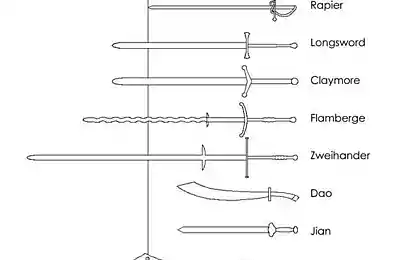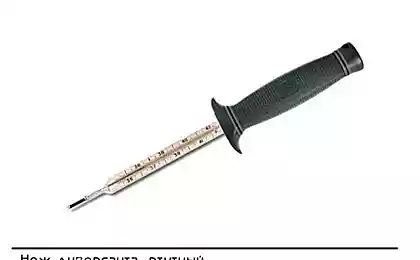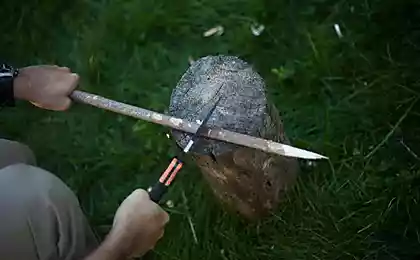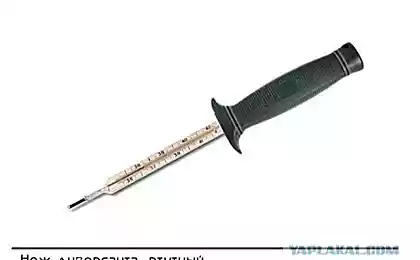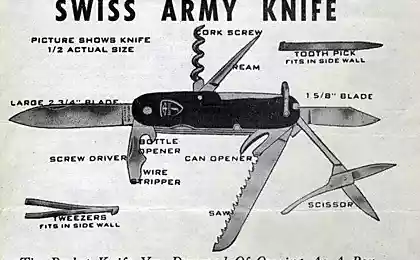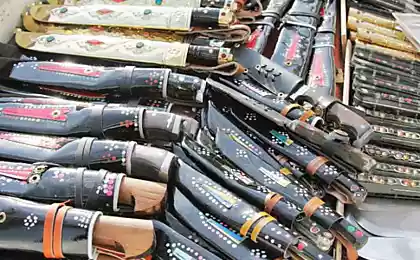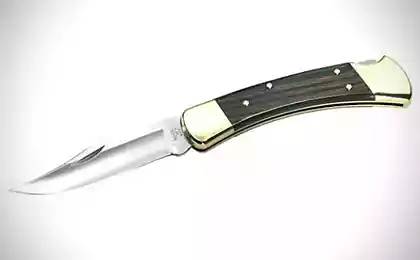599
The oldest multifunction knife
Recently I came across an article from the British newspaper DailyMail (online version). The information turned out to be new to me. As an avid fan of Victorinox and Wenger, I hasten to share. My translation.
The Roman army knife: Or how brilliant Swiss ahead for 1800 years
Scientists had found the world's first "Swiss Army Knife" - produced for 1,800 years before its modern counterpart. The complex structure of the Roman instrument, dating from 200 AD, made mainly of silver, and the blade is made of iron.
In addition to the blade, it consists of [next] folding plugs, spike, spatula and a small toothpick. Experts believe that the Romans could use the thorn to extract the flesh of snails. It is also assumed that the spatula can be used to extract sauces from bottles with narrow necks.
Knife size of 8 to 15 cm was found during excavations in the Mediterranean for more than 20 years ago and came to the museum in 1991. A unique exhibit, along with dozens of other artifacts on display in the newly renovated gallery of antique objects of Greco-Roman culture in the Fitzwilliam Museum in Cambridge. Experts believe that it could belong to affluent travelers for whom was made to order.
The representative of the museum said: "The knife was made between about 200-300 GG BC, at a time when the ancient Roman state was a great empire ».
"The expansion of Rome, 500 BC was only a small state in central Italy, has allowed certain individuals, including, possibly, the owner of the knife, put together a huge state. Enrichment can be achieved either directly by using the fruits of conquest, or indirectly, by using the opportunities for conducting commerce, resulting from the expansion of the empire ».
"We know almost nothing about the former owner of this wonderful knife, but maybe he was one of those who benefited from the large-scale expansion of Roman, such as the owner of a luxury, apparently, could only be provided by people. Perhaps he was a traveler who needed a multi-purpose tool like this to take with you on the road ».
The narrator added: "While many of the extant easier folding knives are made of bronze, the complexity of the design of the blade, as well as what it is made of silver, suggest its a luxury. Probably, it was a pretty comfortable "gadget" To ensure the traveler ».
Modern Swiss Army Knife was created by Carl Elzenerom in 1897 in the town of Ubach in the Swiss canton of Schwyz. Such knives, a kind of "fighting toolkit" for soldiers who have since become regular equipment of many modern armies, thanks to manufacturing quality and durability. Nationalist Elzener decided to develop a knife of his own design, when he discovered that supplied the Swiss army knives are manufactured in neighboring Germany.
Other popular exhibits of the museum include the elaborate make-up box, which was made almost 3,000 years ago by order of "wealthy and noble woman." Round earthenware container for cosmetics from Athens dates back to 740 BC, and experts believe that it is stored in the burial in the ancient Greek city for 2,700 years. Stash height of 6 inches and a diameter of 12 inches was intended for storage of jewelry and makeup of the era, made of natural materials.

Source:
The Roman army knife: Or how brilliant Swiss ahead for 1800 years
Scientists had found the world's first "Swiss Army Knife" - produced for 1,800 years before its modern counterpart. The complex structure of the Roman instrument, dating from 200 AD, made mainly of silver, and the blade is made of iron.
In addition to the blade, it consists of [next] folding plugs, spike, spatula and a small toothpick. Experts believe that the Romans could use the thorn to extract the flesh of snails. It is also assumed that the spatula can be used to extract sauces from bottles with narrow necks.
Knife size of 8 to 15 cm was found during excavations in the Mediterranean for more than 20 years ago and came to the museum in 1991. A unique exhibit, along with dozens of other artifacts on display in the newly renovated gallery of antique objects of Greco-Roman culture in the Fitzwilliam Museum in Cambridge. Experts believe that it could belong to affluent travelers for whom was made to order.
The representative of the museum said: "The knife was made between about 200-300 GG BC, at a time when the ancient Roman state was a great empire ».
"The expansion of Rome, 500 BC was only a small state in central Italy, has allowed certain individuals, including, possibly, the owner of the knife, put together a huge state. Enrichment can be achieved either directly by using the fruits of conquest, or indirectly, by using the opportunities for conducting commerce, resulting from the expansion of the empire ».
"We know almost nothing about the former owner of this wonderful knife, but maybe he was one of those who benefited from the large-scale expansion of Roman, such as the owner of a luxury, apparently, could only be provided by people. Perhaps he was a traveler who needed a multi-purpose tool like this to take with you on the road ».
The narrator added: "While many of the extant easier folding knives are made of bronze, the complexity of the design of the blade, as well as what it is made of silver, suggest its a luxury. Probably, it was a pretty comfortable "gadget" To ensure the traveler ».
Modern Swiss Army Knife was created by Carl Elzenerom in 1897 in the town of Ubach in the Swiss canton of Schwyz. Such knives, a kind of "fighting toolkit" for soldiers who have since become regular equipment of many modern armies, thanks to manufacturing quality and durability. Nationalist Elzener decided to develop a knife of his own design, when he discovered that supplied the Swiss army knives are manufactured in neighboring Germany.
Other popular exhibits of the museum include the elaborate make-up box, which was made almost 3,000 years ago by order of "wealthy and noble woman." Round earthenware container for cosmetics from Athens dates back to 740 BC, and experts believe that it is stored in the burial in the ancient Greek city for 2,700 years. Stash height of 6 inches and a diameter of 12 inches was intended for storage of jewelry and makeup of the era, made of natural materials.

Source:
